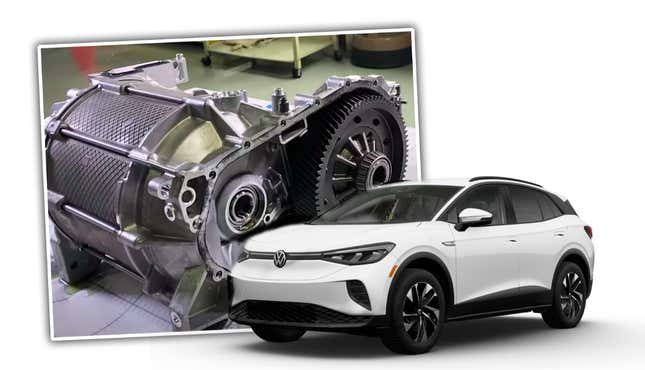
The VW ID.4 may be a ho-hum product, especially compared with modern Teslas, but make no mistake: Volkswagen is an engineering powerhouse and has been for decades. This is why I have high hopes for the company’s MEB platform — VW knows how to build cars, it has huge market reach, and it’s got an enormous supply base. The company should be able to play a huge part in bringing EVs into the mainstream. This video from automotive benchmarking company Munro & Associates confirms some of my thoughts, as it shows how nicely VW designed its motor and gearbox.
Two years ago I wrote a thorough engineering deep-dive on the Volkswagen MEB platform, concluding that it had potential to make a huge impact on the state of worldwide automotive electrification. I believed that then as I believe it now because of VW’s huge financial commitment to its MEB platform, its market reach, and its experience engineering automobiles.
Reviews of the ID.4 crossover have been a little disappointing. The car seems fine. Just fine. That, to me, sounds like a failure on the product planning side of things, because the actual bones behind the car seem clever enough. Here’s manufacturing-guru Sandy Munro’s close look at the ID.4's motor and gearbox (together referred to as a “drive unit”). Overall, Sandy seems impressed, saying “We’re seeing things that are different than everybody else”:
That’s a 35 minute video; if you don’t have time to go through that, fear not. I’ll break it down a bit. First, check out this awesome cutaway from Volkswagen:
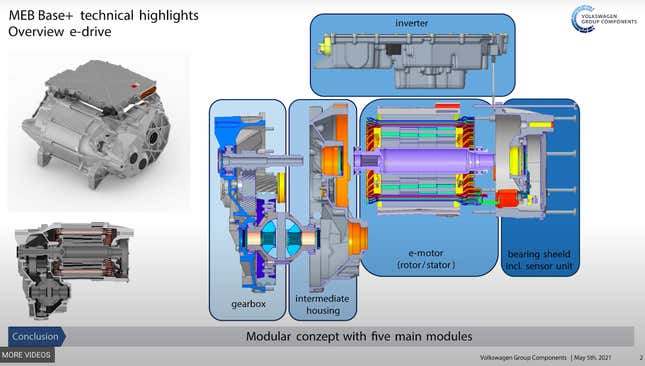
The image above lays out the ID.4's drive unit. An inverter (that’s what turns DC current from the battery to AC for the motor) sits atop the motor and gearbox, each of which is split up into two main parts. You can see that the gearbox is split into what’s labeled a “gearbox” and an “intermediate housing” while the motor is split into the main rotor/stator housing and then a bearing shield (oddly spelled “sheeld”), which contains a bearing and the rotor position sensor/rotation angle sensor.
You’ll notice that the motor’s rotor and the gearbox input shaft are only supported by three bearings in total. The rotor has its own bearing outboard (in the bearing shield), the gearbox input shaft has its own bearing on the other outboard side of the drive unit (in the main gearbox), and then there’s a bearing in the middle supporting the other end of the rotor and input shaft, where the two mate in the intermediate housing (the gearbox’s splined input shaft slides into the female-splined rotor). Here’s a closer look:
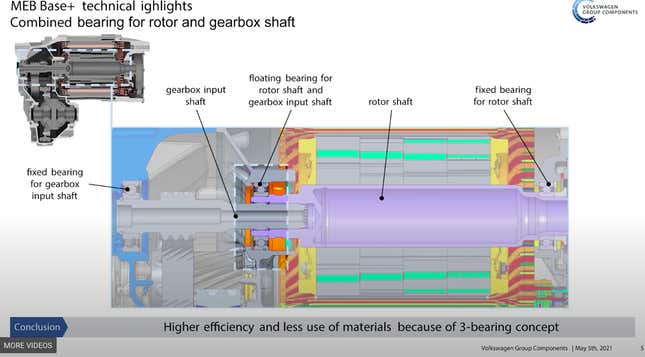
Why does this matter? Well, as Munro points out, reducing bearing count is a good thing from a cost and parasitic loss standpoint, and three bearings is fewer than the four that Munro says Tesla uses in its drive modules (Munro notes that Tesla’s bearings are larger). Here’s a little sketch Munro & Associate’s president Cory Steuben sent my way to demonstrate the difference between the two automakers’ designs:
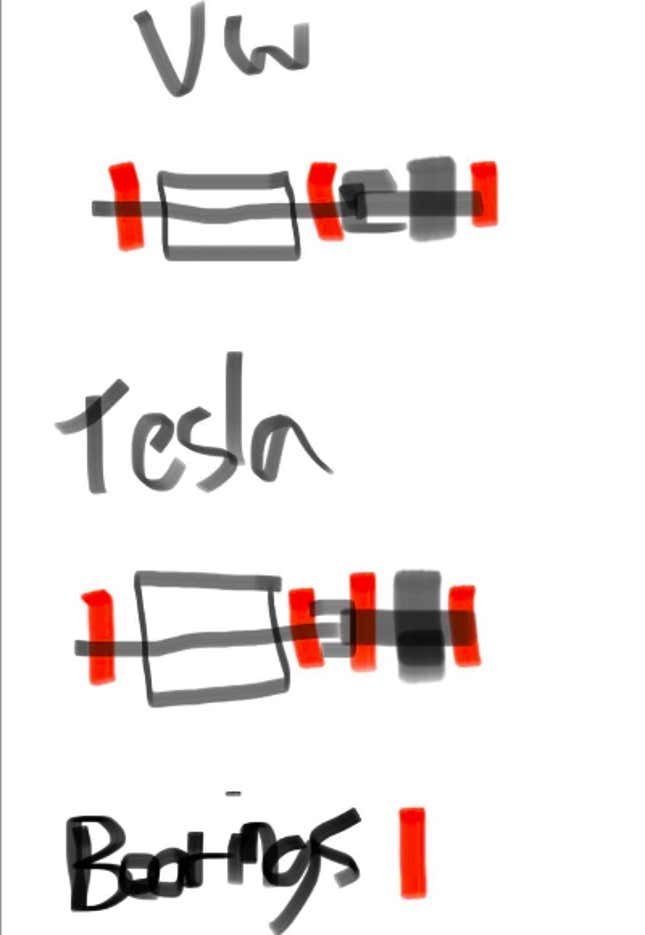
Let’s have a look at the actual hardware. Here’s the ID.4 motor’s splined rotor:
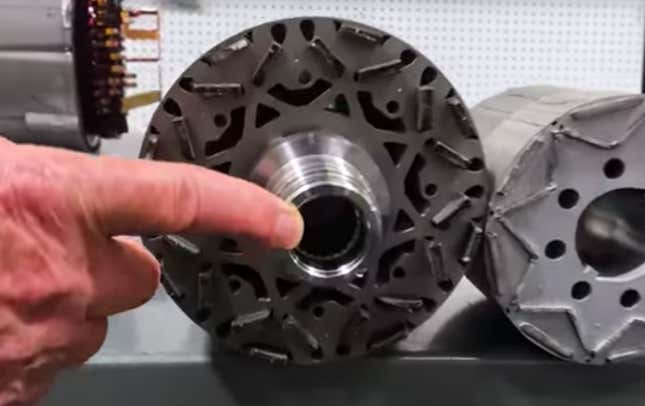
And here’s the transmission input shaft that slides into that rotor:
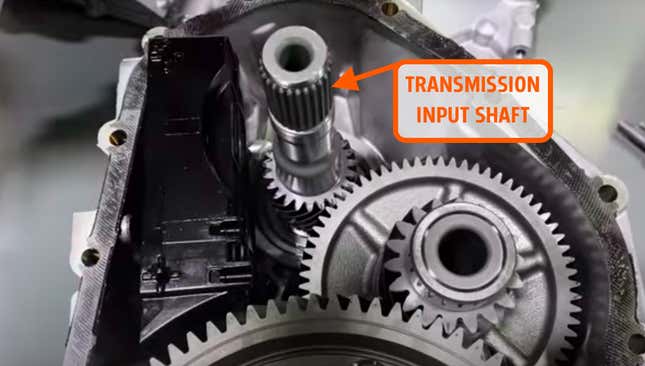
You’ll notice how the gearbox input shaft meshes with an intermediate gear, which shares an axis of rotation with another intermediate gear, which meshes with the ring gear of a conventional differential (shown below), yielding a roughly 10:1 gear reduction.
The gearbox output shafts (i.e. the axles) are parallel to the input shaft (and thus rotor), meaning the motor on the rear-wheel drive VW ID.4 sits ahead of the axle. This is fairly typical in the EV space, though some EV models like the Ford Mustang Mach-E and Jaguar I-Pace have their motors on the same axis as their drive axles via planetary gear-sets.
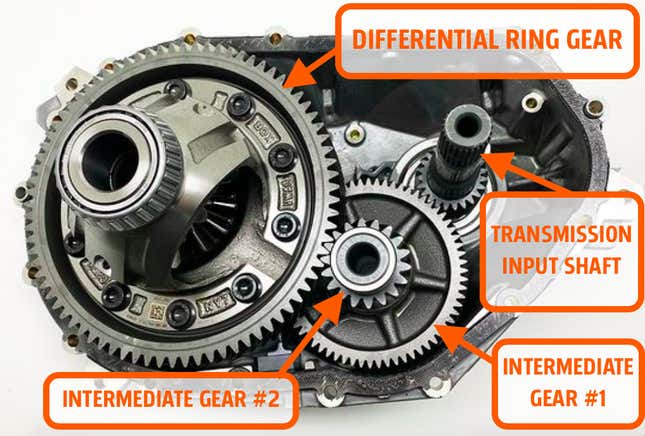
Here’s a look at the setup showing the motor ahead of the axle:
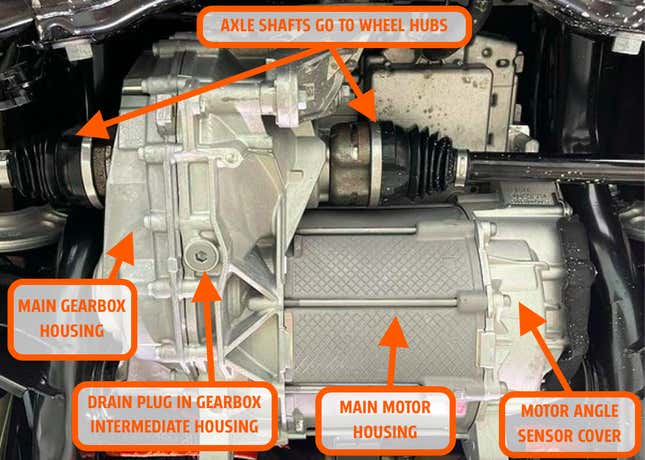
Now it’s time to talk about the cooling system, because it is awesome. Liquid coolant (which it’s safe to say is part of a chiller loop (i.e. refrigerant brings coolant temperature to below ambient)) begins by entering the inverter. This makes sense, as the electronics are much more sensitive to heat than are the stator windings.

Still, the stator needs to be cooled, so from the inverter, coolant goes down into the “bearing shield” half of the motor housing, and then into the main motor housing.
Here’s a look at where coolant enters the inverter, and where it leaves to enter the bearing shield part of the motor housing before going to the main motor housing to cool the stator:
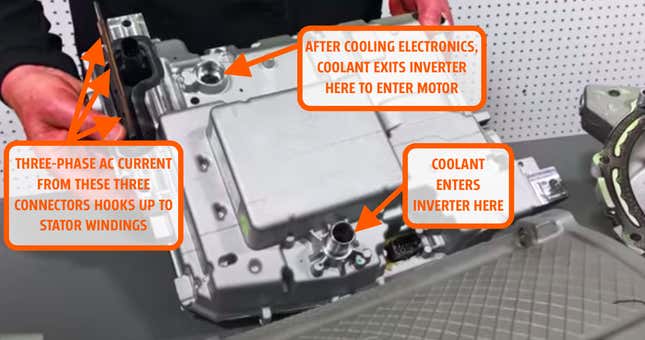
You can see here how the inverter sits on the motor. The three connectors labeled above bolt up to the motor, feeding the three windings in the stator (each winding’s voltage is 120 degrees out of phase with that of the other windings, hence why these are called “three phase” AC motors. Further explanation of this is beyond the scope of this story, but here’s a reference):

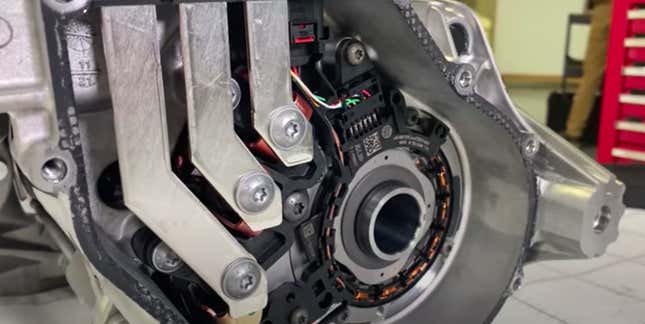
Here on the bearing shield, you’ll see the coolant port (and rubber seal) that plugs into the inverter’s output hole:

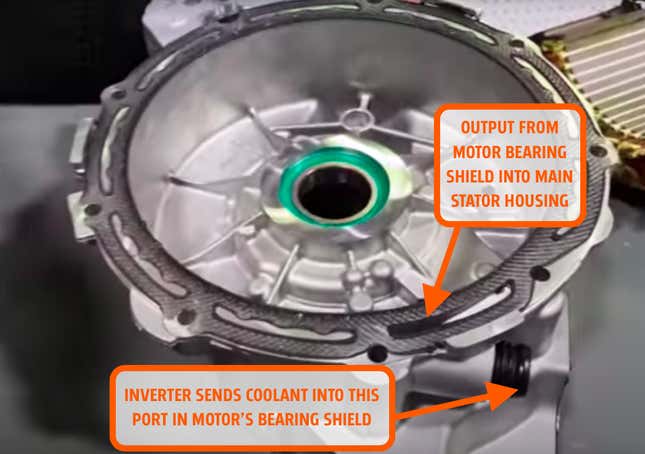
From the motor bearing shield, coolant then enters the main stator housing, which is shown below with an arrow pointing at where coolant enters (see: “IN”):
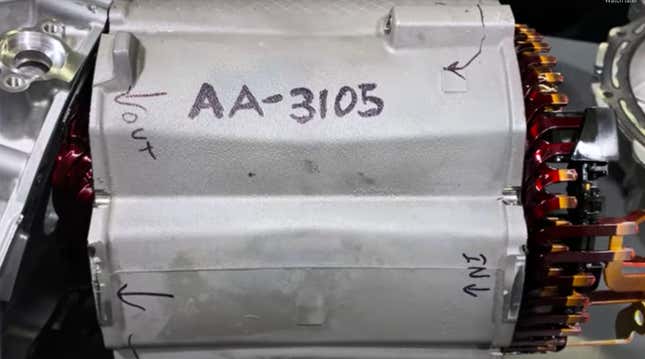
Once inside the stator housing, coolant runs back and forth through cast passages parallel to the stator’s axis (shown below. You’ll see a tiny hole in the casting. Sandy thinks this hole is there to bleed air out of the system for more effective and even cooling):
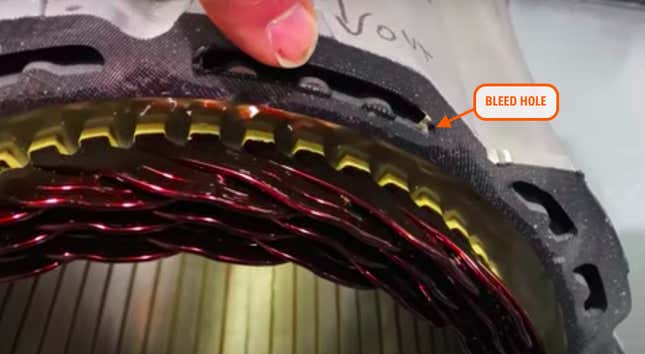
The outlet port is on the far side of the stator housing (opposite side of the housing relative to the coolant inlet from the inverter) where it mates with the gearbox’s intermediate housing, which contains the outlet elbow for the coolant to continue on to the next leg of the cooling circuit.
Here’s a look at that elbow. (I’ve also pointed out where high voltage DC current enters the inverter, because why not. Recall that the AC current exits the inverter via the three connections, which hook up to the stator windings).
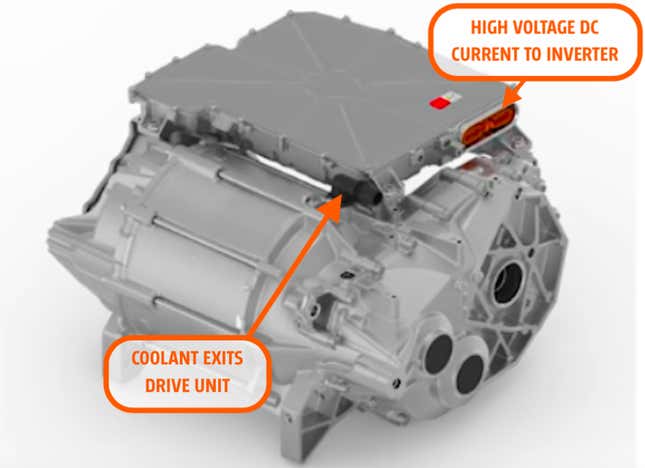
Munro points out that the ID.4's cooling system is significantly simpler than that of the Tesla Model 3, with Sandy saying: “Volkswagen has basically jumped ahead of Tesla in getting rid of [an oil pump, an oil filter, and a heat exchanger].” Here’s a look at the Model 3's setup:
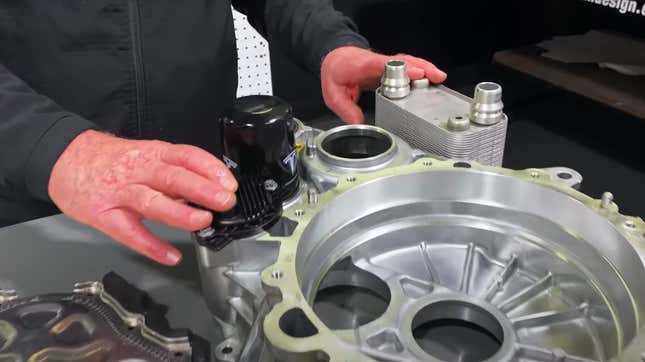
Curious to know if there are advantages of Tesla’s system, I reached out to Munro’s president Cory Steuben, and he told me that the answer is yes. As I’ve written before, Tesla actually “stalls” its electric motor to help heat up the battery — a brilliant strategy that foregoes the need for an electric resistance heater (PTC heater). From Cory:
VW[’s gearbox] is splash [lubrication] with a drip tray. A plastic tray catches gear oil and has several holes that drip down perfectly on each gear interface.
In the model 3’s the oil system was strategically used to pull heat out of the stator for heating the battery.
Not sure if VW has [an] expensive, separate, PTC heater for low temperate conditions. If so, the Tesla’s oil pump and strategy is actually cheaper.
The newer model 3’s and Y’s have heat pumps which are 3x more efficient at heating so the need to stator waste heat is diminished. The heat pumps pull heat out of the [liquid cooled condenser].
Munro also mentions the ID.4's hairpin stator design, saying it offers a better fill factor than a typical pull-in style stator (this is something I’ve discussed before in my Taycan deep-dive).
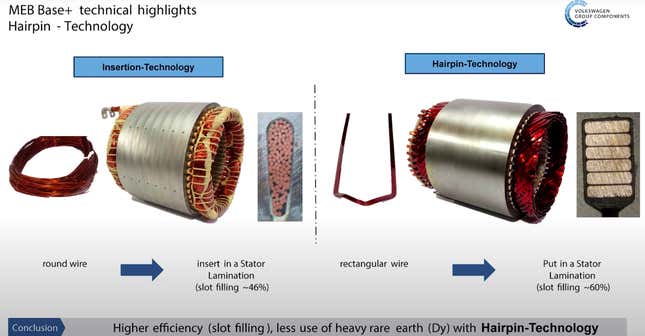
But the VW wasn’t perfect. Sandy points out burrs on the aluminum gearbox’s carrier bearing retainer — a sign of a sloppy production process. Munro also mentions that VW’s reliance on fasteners to hold the motor’s rotor and to assemble the inverter are significant liabilities — not just to longevity, but to overall cost. Add to that the fact that Munro wasn’t particularly impressed with the ID.4's overall driving experience, and you begin to get a more balanced picture of how well VW executed its first high-volume EV in the U.S. My takeaway: The car has potential — from a technical standpoint — to be much better than it is.
Luckily, the platform is here to stay, so VW will have plenty of chances to allow MEB to really flex its stuff, and to be a more compelling product that really wows customers.